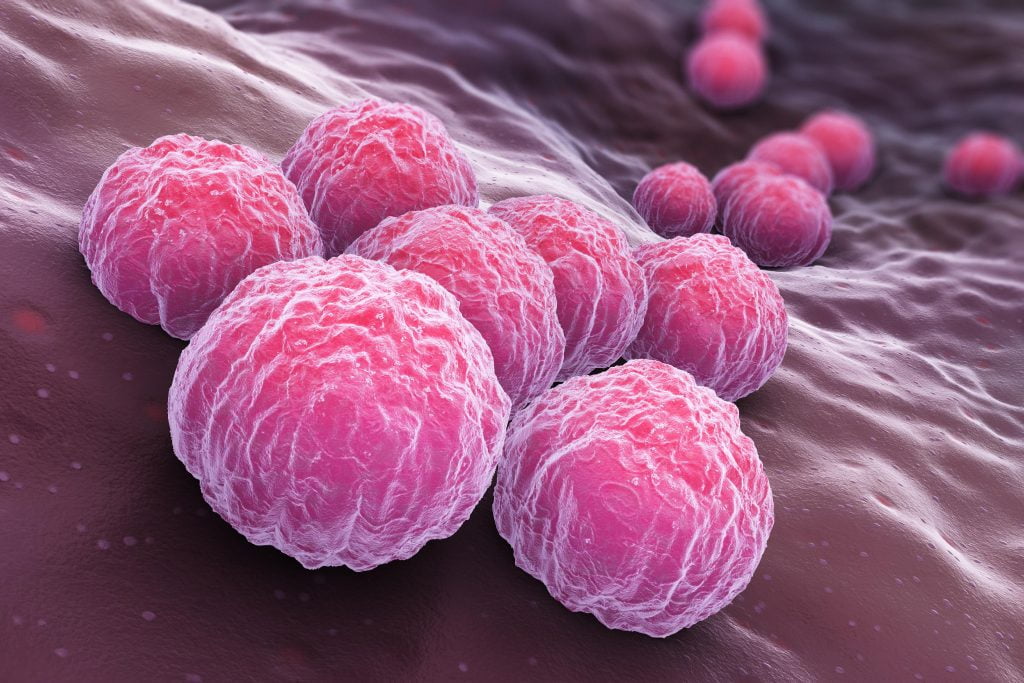Over 2.9 million people get infected with Chlamydia each year and it has become the most widespread sexually transmitted disease (STD) in the world. A...

Even if chlamydia is a very prevalent STD, it is very easy to treat and cure. When left untreated it can lead to painful consequences and serious health complications like pelvic pain, testicular pain in men, and infertility in both men and women. The condition is caused by a bacteria known as Chlamydia trachomatis. Many people with the disease do not often get any apparent signs and symptoms that they are already infected.
Chlamydia can exist inside the uterus or woman’s womb, cervix, vagina, urethra, rectum, and even at times the eyes and throat of the infected patient. Anyone who is sexually active can have the disease and pass it on easily, even if they do not have a lot of sexual partners.
The Chlamydia infection is often caused by bacteria that can be obtained through various sexual activities. The three most common types of Chlamydia bacteria are Chlamydia Suis, Chlamydia Muridarum, and Chlamydia Trachomatis. Chlamydia Suis is the most common of all the species of chlamydia. These bacteria types are unable to exist without their host, so it is very convenient for them to shift from one body to another via the exchange of bodily fluids. There are also transmissions that occur through childbirth as the bacteria passes through the birth canal from the mother to the infant.
Chlamydia can be tough to detect. Oftentimes, the person infected has no idea that they are already infected. The symptoms of Chlamydia can vary depending on the gender of the person infected by the bacteria. In men, they can experience abnormal discharges from their penis accompanied by a really hot or burning sensation when urinating. For women, they can experience abnormal vaginal discharges and a burning sensation when urinating, as well as abdominal pains, and bleeding.
A huge amount of the population are unaware that are already infected with Chlamydia, and so they often leave the disease untreated. When it is left untreated, inflammation around the testicles among men can happen. For females, the inflammation of the female pelvis can lead to infertility.
Treating Chlamydia is something that a person should prioritize and not take for granted. It can lead to other serious medical conditions and these can pose health hazards to themselves and their loved ones. Always treat a Chlamydia infection as early as possible. Antibiotics are used in the treatment of Chlamydia, including Azithromycin, Doxycycline, Erythromycin, Ciprofloxacin and Tetracycline.
Although Chlamydia infection is highly curable, it is still best to avoid catching an infection. Preventing infection can be achieved through complete abstinence from sexual activities of any form. Otherwise, condoms can be used for protection. However, for those who are already infected with Chlamydia, it is highly recommended to seek medical assistance. For those who are sexually active, regular screening for STD is strongly recommended.
Azithromycin is prescribed for 7 to 10 days to treat for Chlamydia infection.
Take Azithromycin as prescribed by your doctor. Take the Azithromycin pills with a glass of water and with meals. Taking the antibiotic with meals prevents upset stomach and vomiting, and the medicine will be easily absorbed by the body. Take it as often as prescribed by your physician. Never take antacids like Maalox, Rolaids, or Tums two hour before or after the taking pills.
Never give out Azithromycin to other people. They may be taking other medicines which have an adverse reaction to the Azithromycin.
Like any other Chlamydia medicine, Azithromycin has its own side effects, but not everyone experiences them. The possible side effects of Azithromycin can include vomiting, diarrhoea, dizziness, upset stomach, and vaginal yeast infection.
Always consult your doctor before taking Azithromycin to cure a Chlamydia infection.
No FAQs available.
Fast, Discreet, and Convenient
We're here to support :)
We are available Monday through Friday from 9am to 4pm. Do not use this service if you need urgent assistance. You should call 111 or 999 in an emergency. See our help section for more information.
Payment Options




| Cookie | Duration | Description |
|---|---|---|
| cookielawinfo-checkbox-analytics | 11 months | This cookie is set by GDPR Cookie Consent plugin. The cookie is used to store the user consent for the cookies in the category "Analytics". |
| cookielawinfo-checkbox-functional | 11 months | The cookie is set by GDPR cookie consent to record the user consent for the cookies in the category "Functional". |
| cookielawinfo-checkbox-necessary | 11 months | This cookie is set by GDPR Cookie Consent plugin. The cookies is used to store the user consent for the cookies in the category "Necessary". |
| cookielawinfo-checkbox-others | 11 months | This cookie is set by GDPR Cookie Consent plugin. The cookie is used to store the user consent for the cookies in the category "Other. |
| cookielawinfo-checkbox-performance | 11 months | This cookie is set by GDPR Cookie Consent plugin. The cookie is used to store the user consent for the cookies in the category "Performance". |
| viewed_cookie_policy | 11 months | The cookie is set by the GDPR Cookie Consent plugin and is used to store whether or not user has consented to the use of cookies. It does not store any personal data. |